The lev (plural leva) is the official currency of Bulgaria. Its ISO 4217 code is in BGN and its symbol is “lv”. The lev is divided into 100 stotinka (or stotinkas, stotinki in the singular).
As of the date of this update on August 9, 2023, the equivalence of the lev currency against the euro is very stable at:
- 1 euro = 1.96 BGN
- 1 lev = 0.51 euros.
History of the Bulgarian lev
The lev was created in 1881, at the height of Bulgarian nationalism, when the country had achieved its own autonomous status and achieved some independence from the Ottoman and Austro-Hungarian empires.
Later, the lev (BGJ) became the official currency of the new state of Bulgaria.
In 1952, after a redenomination due to post-war inflation, the “second lev” (BGL) replaced the previous one at a rate of 1 BGL = 100 BGJ.
However, rampant inflation continued to shape the fate of the Bulgarian currency throughout the 20th century. The “second lev”, the BGL, barely lasted for ten years and was eventually replaced by the BGK or “third lev” with an exchange rate of 1 to 10.
The latter was also replaced in 1999 by the current lev with ISO code 4217 BGN.
Below, we summarize all this evolution in a brief summary of the validity of each type of lev by historical period:
- First lev BGJ (1881-1952)
- Second lev BGL (1952-1962)
- Third lev BGK (1962-1999)
- Fourth lev BGN (1999-present)
At present, after the incorporation of Bulgaria to the European Union in January 2007, and with the aim of complying with the terms of the Accession Treaty, different deadlines have been considered for the elimination of the lev and the introduction of the euro in this country.
However, until today the exchange date of the Bulgarian currency for the euro has been postponed for economic reasons. In addition, a large sector of the Bulgarian population does not welcome the replacement of the lev by the euro.
The Bulgarian National Bank, based in the capital Sofia, is the institution responsible for issuing Bulgarian lev notes and coins.
Bulgarian lev coins
The Bulgarian lev is divided into 100 stotinka. The current series currently consists of the following values:
- Stotinki coins: 1, 2, 5, 10, 20 and 50 stotinki.
- Lev coins: 1, 2 lv (44 and 88 euro cents respectively).
The current series of Bulgarian lev coins was issued in 1999. The 1 lv and 2 lv coins were introduced in 2002 and 2012 respectively, with the aim of replacing banknotes of the same value.
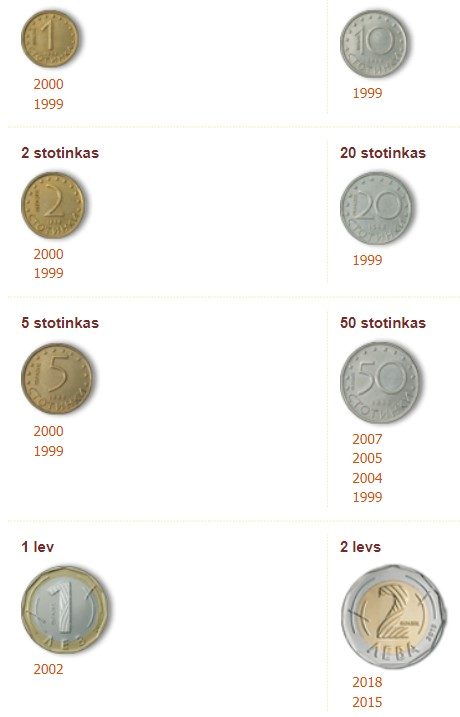
On the obverse of all stotinka coins appear the face value, the year of issue and twelve stars as a symbol of Europe. The reverse shows the word Bulgaria and a representation of the Knight of Madara, one of the country’s national symbols.
It is a large relief of a knight spearing a lion, carved into the rock of the Madara plateau, east of the city of Šumen, in northeastern Bulgaria. This relief has been a UNESCO World Heritage Site since 1979.
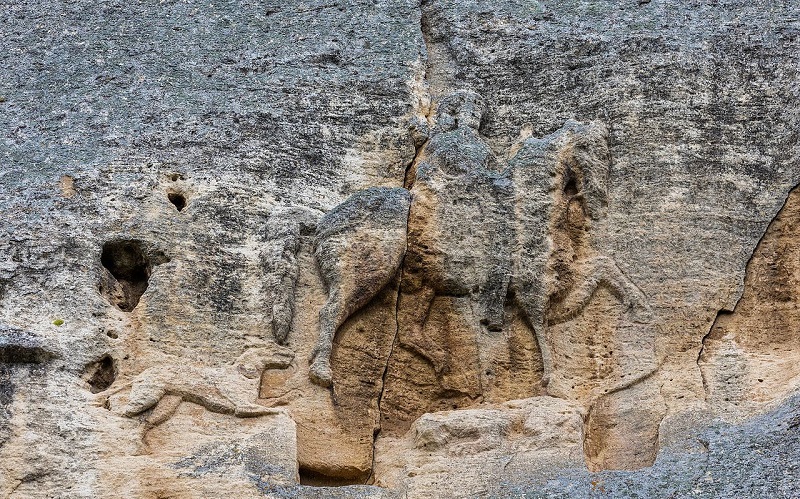
The three lowest-value coins in the series (1, 2, and 5 stotinka) are tan in color, as they are made of an alloy of copper, nickel, and aluminum. On the other hand, the 10, 20 and 50 stotinka coins are silver and made of an alloy of copper, nickel and zinc.
The coins of 1 lev and 2 levs or levs are bimetallic. In the 1 lv the outer ring is gold and the central disc is silver, a pattern that is reversed in the case of the 2 lv.
Both obverses show the face value and the year of issue. On the reverse of the 1 lv coin appears the figure of the Bulgarian saint Ivan Rilski (Saint John of Rila or Saint Ivan of Rila, born in Bulgaria and canonized as a saint by the Church). And in that of 2 lv that of the cleric Paisio de Hilandar (Saint Paisio de Hilandar or Paìsiy Hilendarski), one of the great promoters of the Bulgarian nationalist movement in the 18th century.
Bulgarian lev banknotes
The current series of banknotes issued by the Bulgarian National Bank (banknotes released between 2018 and 2020) have the following values or denominations:
- 5 lv.
- 10 lv.
- 20 lv.
- 50 lv.
- 100 lv.
The 1 lv and 2 lv notes were replaced by coins of the same value in 2002 and 2012.
5 lv banknote
The 5 leva note is maroon in color. On the obverse is the effigy of the Bulgarian artist Ivan Miliev (1897-1927), a Bulgarian painter and set designer, founder of the Bulgarian Secession and a representative of Bulgarian modernism.
On the back, three of his most famous pictorial works: The Dragon Wedding, The Bulgarian Madonna and Harvesting Woman.
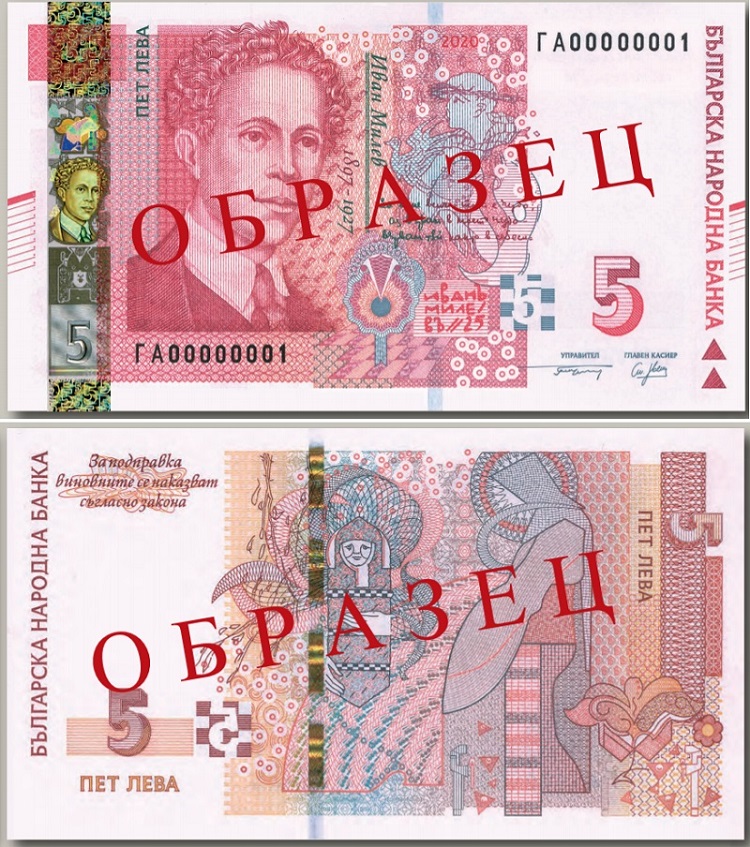
The exchange value of this five leva banknote in France, in August 2023, is about 2.18 euros.
10 lv banknote
Olive green in color, the obverse 10 lv note features the portrait of Doctor Petar Beron (1799-1871), an educator credited with creating the first modern Bulgarian primer (known as the fish primer for the dolphin that appeared on its back cover, which is why Beron has been called “the father of modern Bulgaria”.
On the obverse are some of his most beloved possessions, such as his famous telescope.
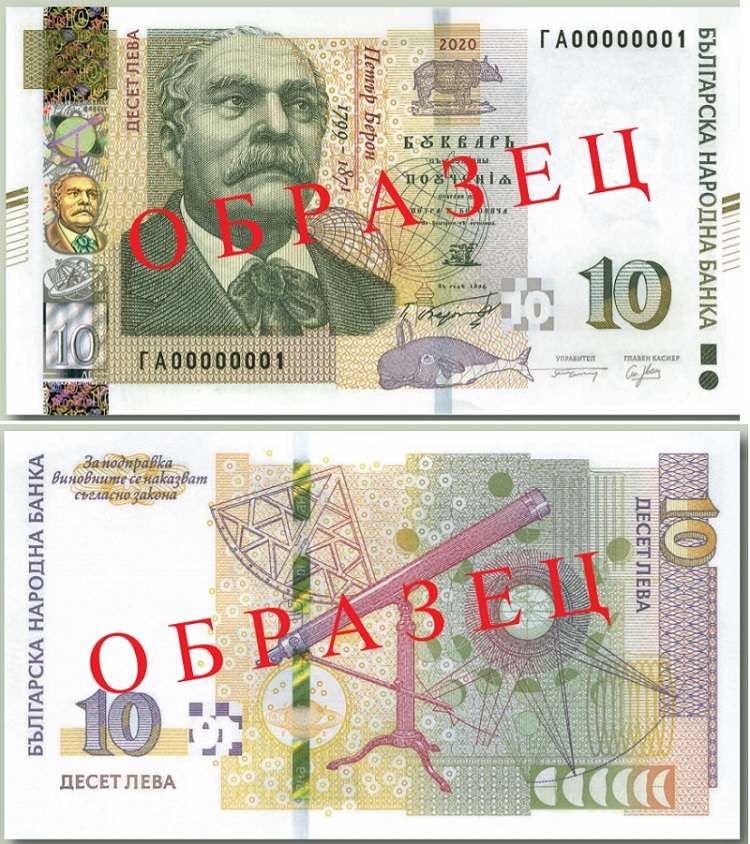
If you had a 10 lev banknote in your hands, it would be equivalent in August 2023 to 4.37 euros in France.
20 lv banknote
The purple twenty-lev banknote was designed by Bulgarian artist Kiril Gogov and released in 2005. Its protagonist is Stefan Nikolov Stambolov (1854-1895), Prime Minister and Regent of Bulgaria. Stefan Stambolov is considered one of the founders of modern Bulgaria. Some call it the “Bulgarian Bismarck”.
On the obverse are the symbols of the Bulgarian National Bank: stylized elements of the facade of its headquarters building and other emblems. The obverse shows a replica of the first 20 leva note, issued in 1885.
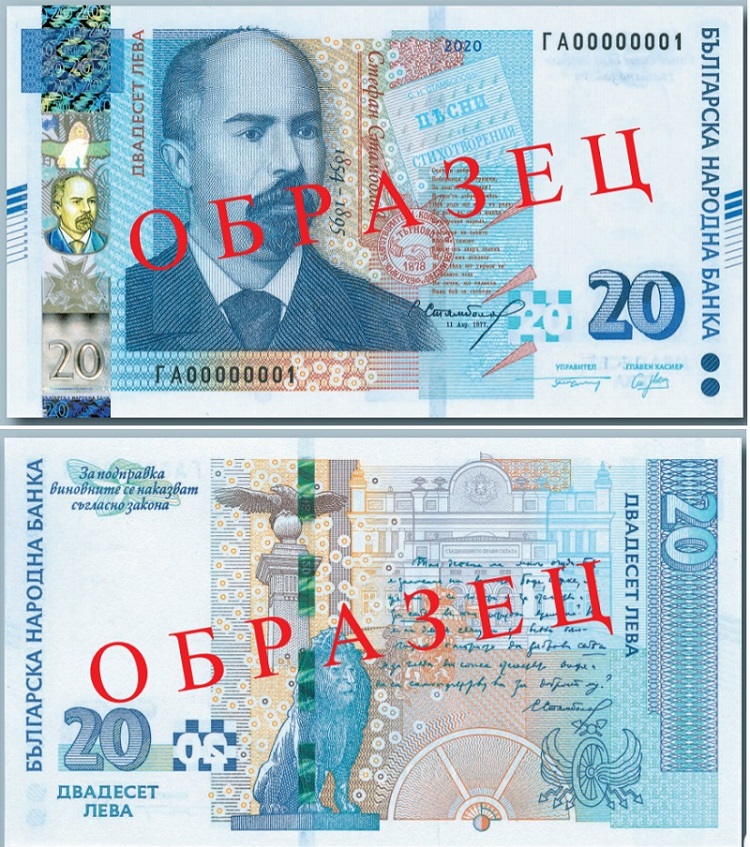
The equivalent value of this banknote in France, in August 2023, is approximately 8.74 euros.
50 lv banknote
The fifty leva (50 levs) note, brown in color, is decorated with the figure of the poet Pencho Slaveykov (1866-1922). Slaveykov was one of the participants in the Misal circle.
His father was the writer Petko Slaveykov. Next to his effigy are images of the Bulgarian National Theater (Ivan Vazov National Theatre) and the Bulgarian National Library (St. Cyril and Methodius National Library), both in Sofia.
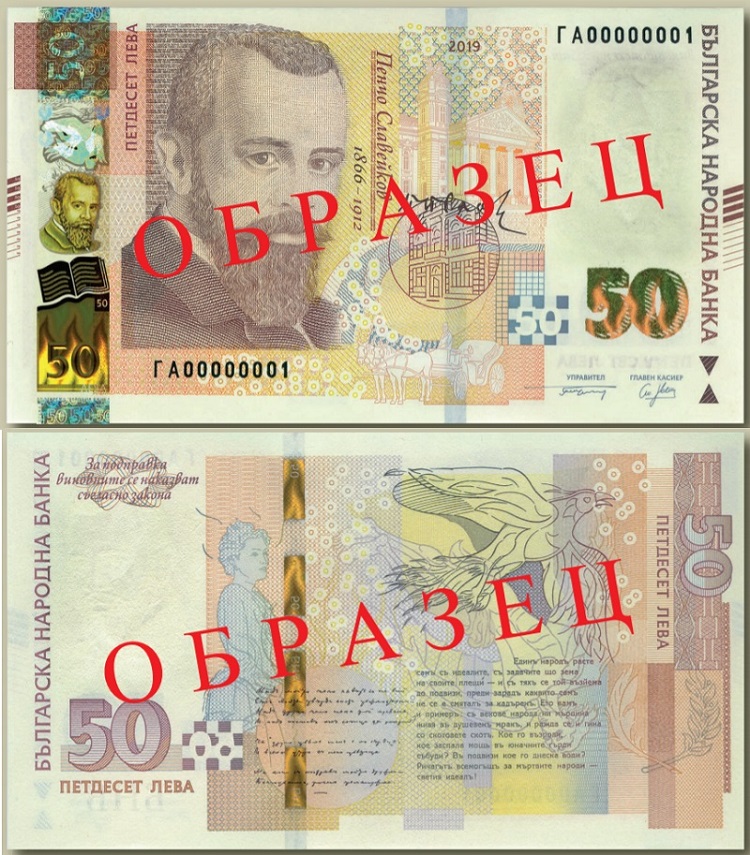
On the obverse you can read one of Slaveykov’s most famous texts. The value of this banknote at the current exchange rate in France is about 21.84 euros.
100 lv banknote
The exchange value of the one hundred lev banknote is a little less than 50 euros. It is green in color and is decorated with a portrait of the Bulgarian writer Aleko Konstantinov (1863-1897). A cosmopolitan traveller, Konstantinov was one of the first to bring his experiences after his travels through Western Europe and North America (including Niagara Falls) to Bulgarian letters.
Bulgarian readers of his day appreciated his accounts of the World’s Fairs in Paris (1889), Prague (1891), and Chicago in 1893, after their independence from Ottoman oppression for 500 years.
Konstantinov was assassinated in 1897, whether it was due to confusion over a politician he was traveling with at the time or his scathing writings against the politicians of that time.
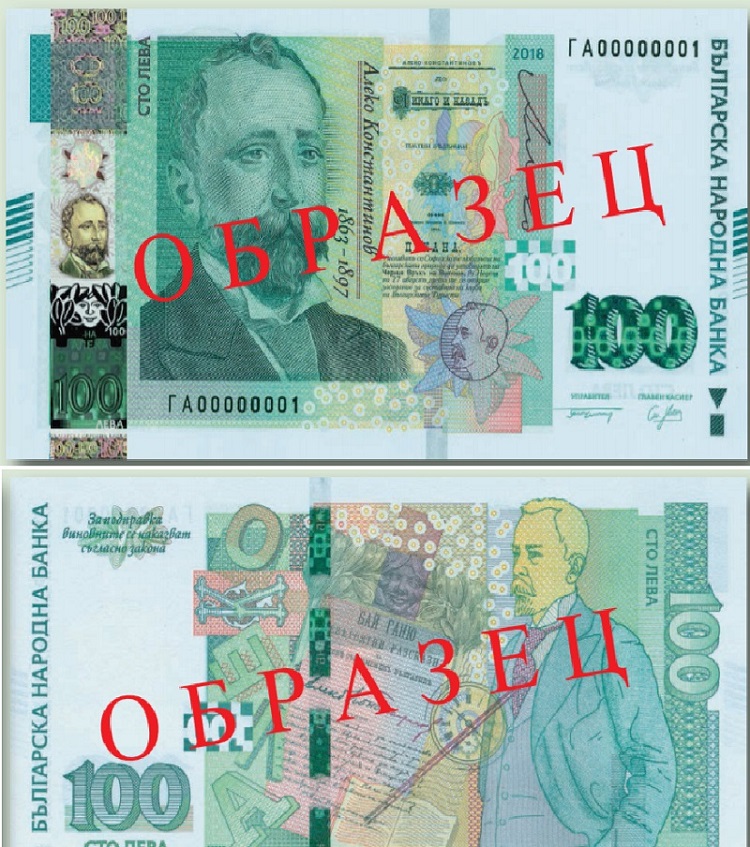
This banknote is worth 43.69 euros in August 2023 at currency suppliers in France.
Euro to Bulgarian lev exchange rate
The exchange rate of the euro against the Bulgarian lev has remained very stable for more than a decade, with only slight fluctuations.
If you search Google for “euro-Bulgarian lev” you will find dozens of websites (“currency converters”) that offer a “rate” of the day. You will also see this graph with the prices of that pair of currencies from Google Finance.
Something like this (August 9, 2023):
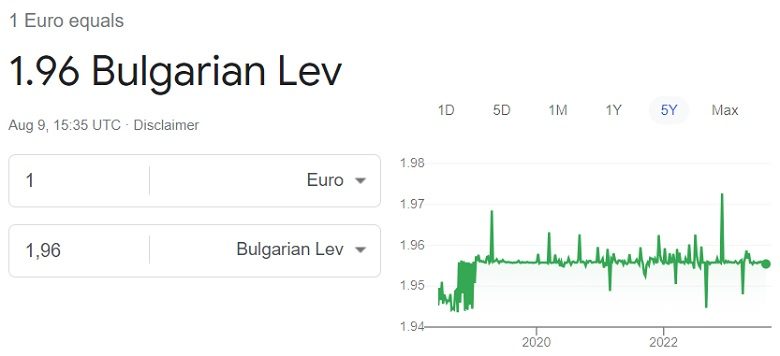
As you can see, the exchange rate in recent years has oscillated between BGN 1.94 and BGN 1.97 per euro. But keep in mind that this graph represents the value of the Bulgarian lev “currency” against the euro, and not that of the paper currency (banknotes), which is lower.
In fact, in currency suppliers in France you can buy Bulgarian leva at an exchange rate of around 1.79 BGN per euro at Comparer Devise and 1.33 leva per euro at the airport (Global Exchange). Nothing to do with the euro to bulgarian lev currency exchange.
So, when you see these values in Google and other currency converters with your mobile, you should keep the following in mind:
-It is an unofficial price, and therefore unreliable. In other words, if you click on the “Disclaimer” link, you get this warning from Google Finance: “Google cannot guarantee the accuracy of the exchange rates shown. Please confirm the current rates before making a transaction that may be affected by variations in exchange rates“.
-These rates that you see are usually wholesale prices of the Bulgarian Lev currency against the Euro currency (currency and banknotes of the same currency are not the same thing).
-This price can only be held by banks among themselves, that is, it is impossible to obtain it as an individual.
If you need Bulgarian leva in banknotes you will have to go through the banknote retail market (bank or currency supplier). This market means that the leva have had to be “transported” by someone for you to enjoy them (or previously bought from travelers from Bulgaria passing through France).
In other words, moving banknotes from one place to another has logistical costs that will make their sale price more expensive (the exchange rate that will be applied by whoever sells them to you).
The Bulgarian lev is a difficult currency to obtain in our country, which is why its price is usually more expensive in France than in Bulgaria. If you decide to buy Bulgarian levs in France, it is good to anticipate the purchase and order them online to obtain a better price.
Where to exchange Bulgarian levs
The three most popular places to exchange Bulgarian levs in France are banks, currency suppliers and the airport.
Banks that sell levs
In France, big banks buy and sell Bulgarian levs, but charge you a commission as well as an exchange rate.
Change levs at the airport
Global Exchange currency supplier (Paris, Marseille et Bordeaux airports) offers levs at its airport offices at poor rates.
Change levs in cheap currency suppliers
You have the best exchange option at the cheap currency suppliers that collaborate with Comparer Devise.
Euro to Bulgarian lev exchange rate today in France
To find out the euro-Bulgarian lev exchange rate today, the best thing you can do is use our currency comparator:
- Change euros to Bulgarian levs (EUR-BGN)
- Change Bulgarian levs to euros (BGN-EUR).
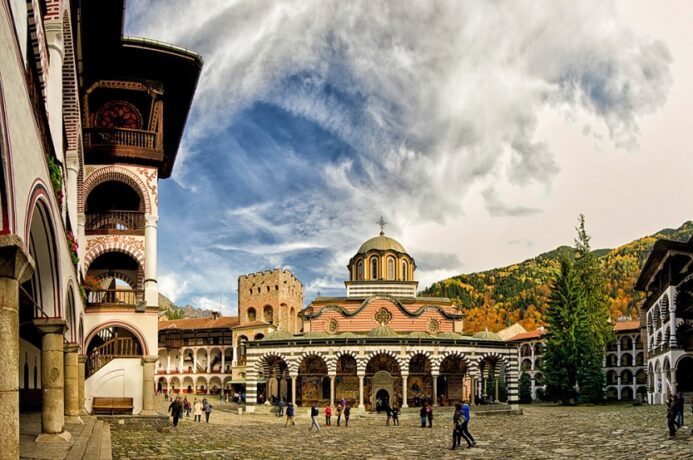
Sin comentarios